Low-Value Meetings vs. High-Value Meetings
Leverage these tips and tricks to boost engagement and fix your meeting culture by combating unproductive, low-value meetings.
Low-value meetings may be an indicator that your organization has a poor meeting culture. If you’ve identified that your organization is failing to host impactful meetings, it may be time to act. In this article, we’ll compare low-value meetings to high-value meetings while noting the staggering negative effects that low-value meetings have on your organization. In addition, we’ll cover in-depth tips you can implement to avoid low-value meetings in your organization moving forward.
- What are low-value meetings?
- Low-value meetings vs. high-value meetings
- The effects of low-value meetings on your organization
- How to avoid low-value meetings
What are low-value meetings?
Low-value meetings are meetings that don’t contribute to greater organizational goals. One of the many downsides of low-value meetings is that they take time and resources and don’t produce any results. This means employees’ time is being wasted as opposed to being spent on necessary tasks. To combat low-value meetings, organizations must strive to host efficient meetings. This can be achieved by setting goals and objectives for each meeting, sticking to a meeting agenda from start to finish, ensuring the right attendees are invited, encouraging engagement and active participation, taking comprehensive meeting notes, and following up on action items that were assigned during the meeting.

Meetings worth showing up to
A well-run meeting can foster communication and collaboration by including an agenda the whole team can contribute to. Try using a tool like Fellow!

Low-value meetings vs. high-value meetings
The main difference between low-value meetings and high-value meetings is that high-value meetings yield results and low-value meetings do not—for instance, low-value meetings often don’t result in impactful decisions or actions, whereas high-value meetings contribute significantly to the organization’s progress. To combat low-value meetings, it’s important to adequately prepare. This means creating a collaborative meeting agenda, keeping the conversation on track by following the agenda, involving only essential stakeholders, and ensuring attendees remain accountable for action items. Hosting high-value meetings and minimizing low-value meetings will streamline efficiency while boosting long-term success.
The effects of low-value meetings on your organization
- Financial loss
- Declines in productivity
- Decreases in employee engagement
- Poor employee retention rates
1Financial loss
Did you know that you could be losing tens of thousands of dollars to low-value meetings? Chances are that your low-value meetings are costing you way more than you think. According to Aydin Mirzaee, the chief executive officer (CEO) and co-founder of Fellow, unproductive meetings cost businesses in the United States upwards of $375B a year. As a purpose-built tool for meetings, Fellow supports every type of meeting—from one-on-ones to project kickoff meetings and stand-ups—so you can boost productivity and cut costs! Calculate the cost of your meetings with our built-in meeting cost calculator as part of Fellow’s new Meeting Guidelines. Fellow estimates the cost of your meeting directly in Google Calendar, so you can right-size every meeting.
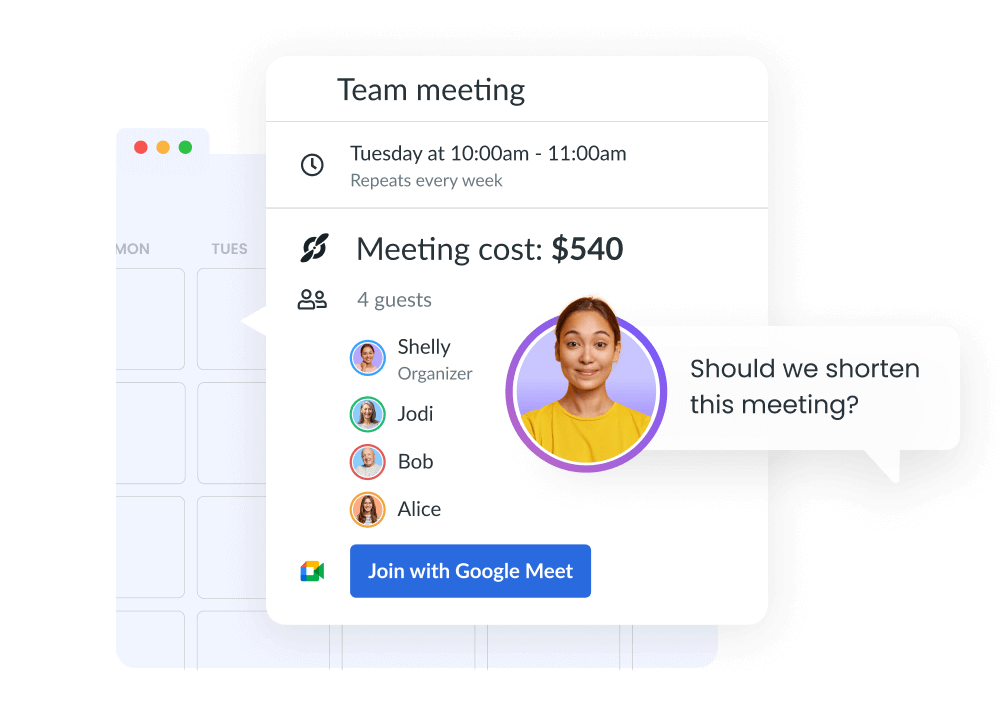
2Declines in productivity
Low-value meetings consume valuable time and resources without yielding results. This wasted time is time that employees can’t get back. Instead of focusing on high-value tasks and priorities, employees are stuck in unproductive meetings. The more time employees spend in low-value meetings, the more likely they are to become less engaged, motivated, and productive.
3Decreases in employee engagement
Because employees often feel like their time is being wasted during low-value meetings, they end up leaving feeling unmotivated and disengaged. This can lead to poor output as well as reduced collaboration and teamwork, hindering the organization’s ability to achieve its goals. To succeed, your employees must be motivated and engaged.
4Poor employee retention rates
There’s nothing worse than feeling underappreciated, undervalued, and unmotivated. Low-value meetings create a negative ripple effect that impacts employees in more ways than one. If employees don’t feel stimulated and feel as though their talents are being underutilized, they may begin to seek employment elsewhere, resulting in high turnover and poor employee retention rates for the organization. If you want to hold on to top talent, you must engage and value your employees.
How to avoid low-value meetings
- Cancel meetings that don’t have an agenda
- Ask for meeting feedback
- Delegate meeting roles
- Assign action items
- Use a meeting agenda template
- Only invite people who bring value to the meetings
- Make your meetings shorter
- Use a meeting timer
- Collect meeting analytics
1Cancel meetings that don’t have an agenda
Haven’t had time to create a meeting agenda? Cancel your meeting until you do. It’s no secret that meetings run much more smoothly with a meeting agenda, and pressing pause until you have the time to create a structured agenda will ensure you host productive meetings from here on out. Additionally, if you’re set to attend a meeting with no agenda, simply reiterate the words you now live by: “No agenda, no meeting.” Not only will you be saving yourself time, but you’ll also be reiterating the message that you prefer to only attend meetings when there’s a meeting agenda. This is the first and most important step to remember when learning how to avoid low-value meetings.
With Fellow’s Time Saver automation, you can either automatically cancel meetings without an agenda (freeing up room in your calendar) or give attendees the option to cancel manually.
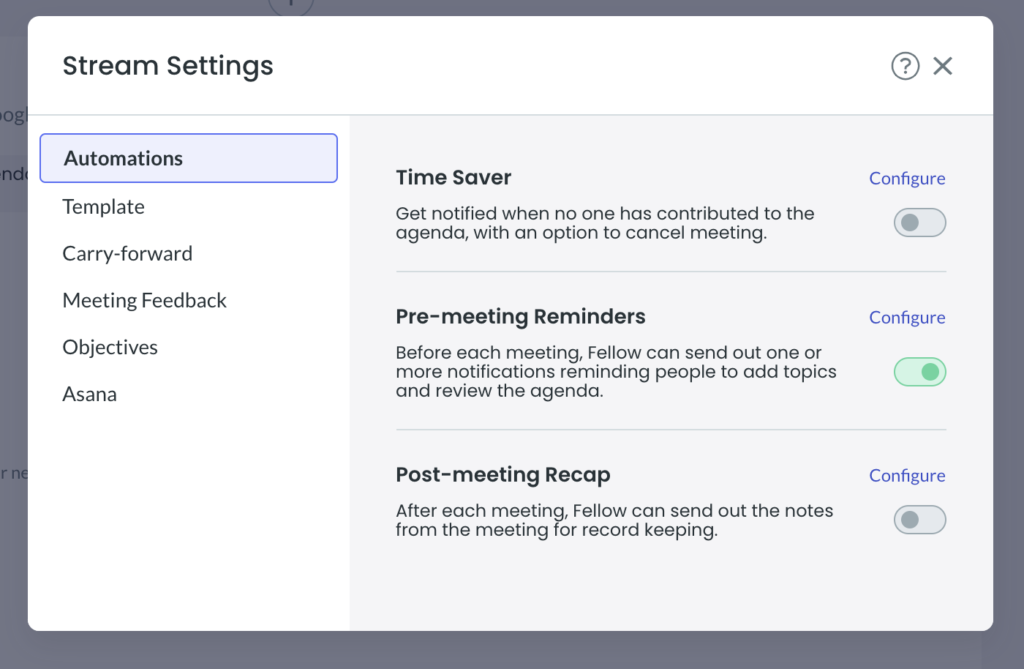
2Ask for meeting feedback
Asking your colleagues or teammates for their honest feedback is a great way to know if you’re hosting high-value meetings. Getting this feedback can be as simple as sending a Slack message after a meeting or simply asking for feedback when the meeting concludes. If it’s a recurring meeting, you can ask once per quarter; if it’s a quarterly meeting, you can ask every time the meeting takes place.
Fellow makes the process of seeking feedback quick and easy with the feedback feature. With Fellow, you can incorporate feedback into your team’s day-to-day experience and track progress over time. Fellow’s pre-built templates help you create a feedback request without overthinking the process. The best part is that you can respond on the web through Fellow or directly through Slack!
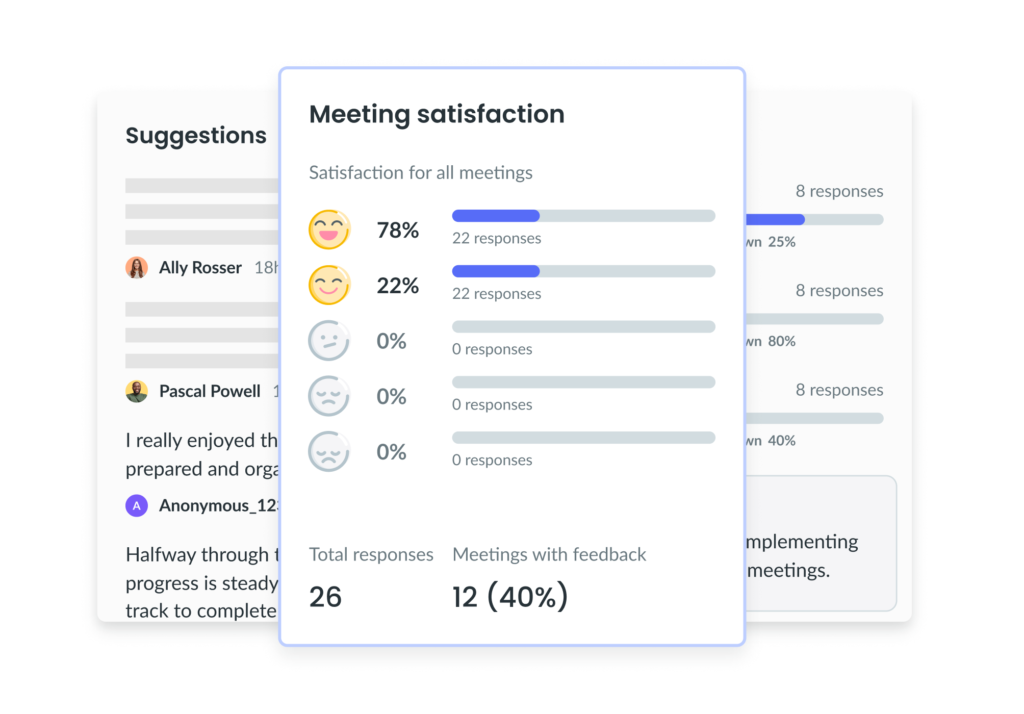
3Delegate meeting roles
To combat low-value meetings, delegating meeting roles is imperative. Delegating meeting roles not only helps the meeting run smoothly but also boosts morale and helps attendees become more engaged. Key roles include a host, a timekeeper, and a note-taker. The host handles everything from invites to direction during the meeting, the timekeeper oversees timing attendees when there’s a structured agenda, and the note-taker is in charge of keeping track of key talking points and decisions. The note-takers duties also include noting key takeaways and next steps so those in attendance remain accountable for their action items when the meeting finishes.
4Assign action items
Assigning action items during meetings ensures accountability and ownership over tasks. Failing to assign action items may lead to attendees leaving the meeting with no direction, meaning they won’t be working towards any goals or objectives. Assigning action items also helps clarify what needs to be done and by when, reducing the likelihood of important tasks falling through the cracks while ensuring everyone is on the same page.
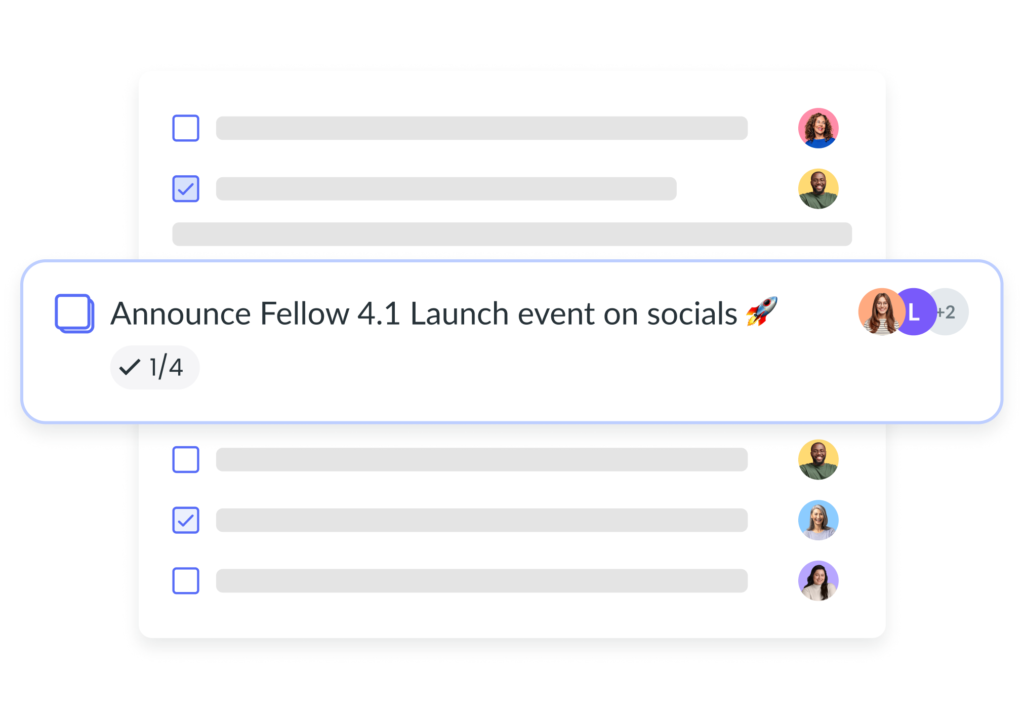
5Use a meeting agenda template
The key to hosting an impactful high-value meeting is leveraging a meeting agenda backed by a comprehensive meeting agenda template. Not only does Fellow empower managers and their teams to collaborate on meeting agendas, centralize action items, and keep track of work interactions and feedback, but it also provides you with over 500 free meeting agenda templates. You can even customize each template and save them for recurring meetings.
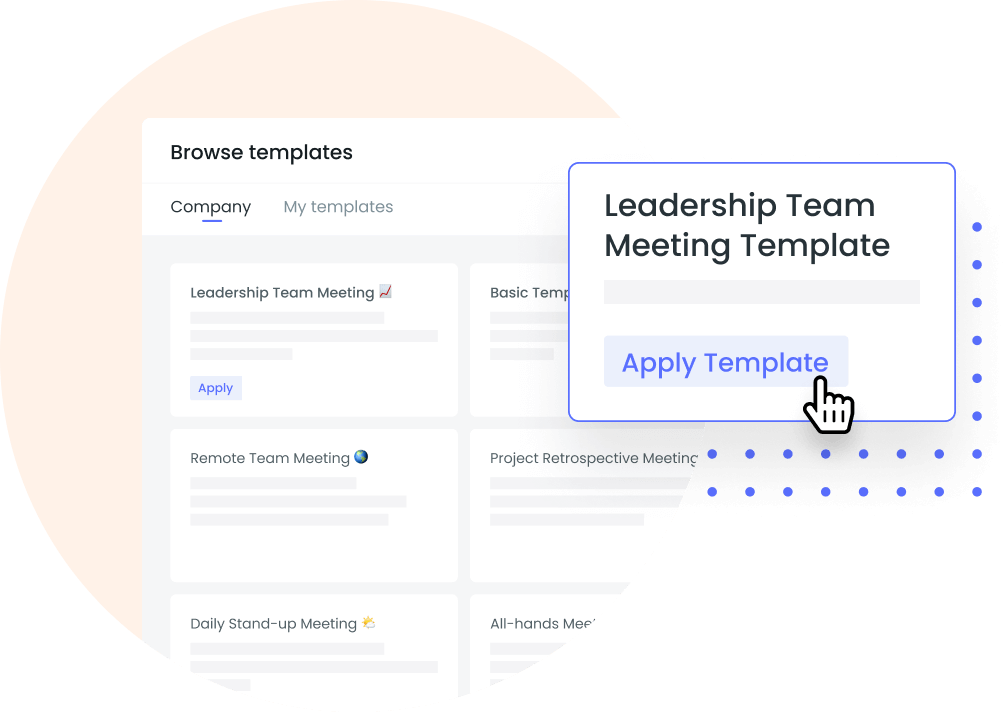
6Only invite people who bring value to the meetings
Inviting too many people or unnecessary attendees is a quick way to derail your meeting. Instead, be methodical with whom you invite. When curating a guest list, keep the key stakeholders in mind. If all key stakeholders or decision-makers are invited, the guest list should suffice. Inviting unnecessary bodies may end up being a waste of time and in turn lead to a low-value meeting.
Pro tip: Fellow’s Meeting Guidelines feature set helps you ensure only the most essential attendees are in your meetings. If a meeting has more than 7 attendees, Fellow will send the meeting organizer a prompt to remove additional attendees, or mark them as optional.
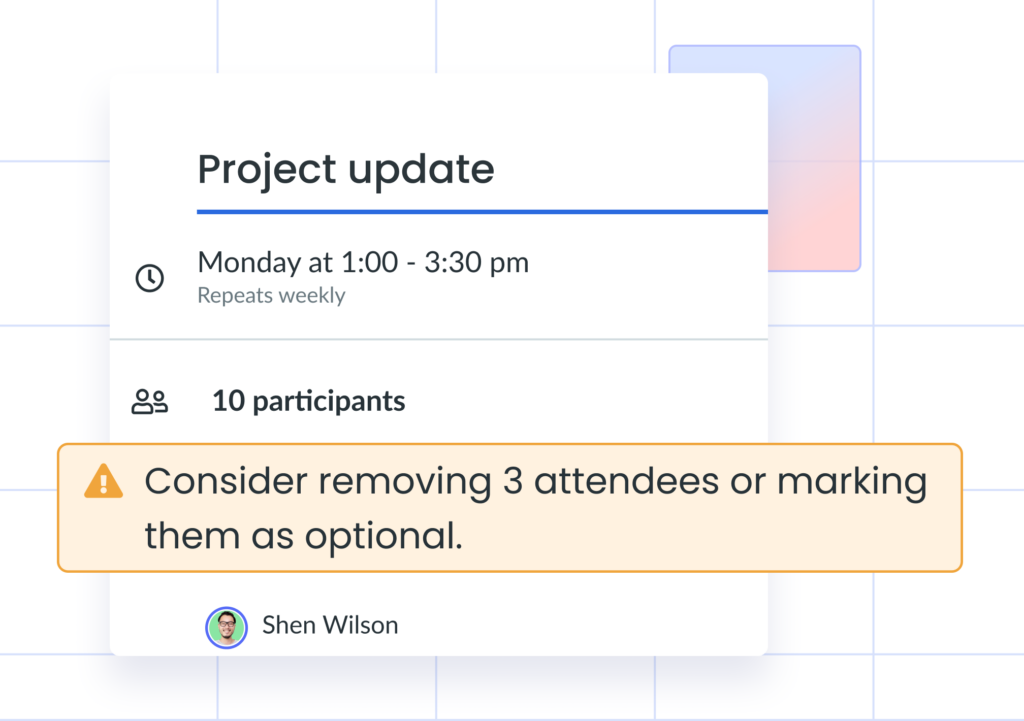
7Make your meetings shorter
Did you know that you may be blocking off too much time for your meetings? An internal company experiment conducted by Fellow showed that scheduling meetings for shorter durations—specifically 50 minutes instead of 60 minutes and 25 minutes instead of 30 minutes—can greatly improve meeting efficiency and attendee focus on critical priorities.
8Use a meeting timer
A meeting timer is an excellent resource that can be leveraged to keep meetings running according to schedule. This means no low-value meetings that go over time and no overpowering employees who take over the conversation. A great meeting timer will help you monitor time spent vs. time planned for the overall meeting and each segment of the meeting, meaning you can keep meetings on track, track time-based tasks, and stick to your meeting agenda. Meeting timers can also be used to limit the amount of time each member speaks in case one person is talking too much or certain attendees haven’t had the chance to speak.
9Collect meeting analytics
Aren’t sure if you’re hosting impactful meetings? Gathering meeting analytics will provide you with the insights you need to determine whether or not you’re hosting low-value meetings. Data gathered from meeting analytics may include specs on attendance, meeting duration, participation levels, or topics discussed. This data can then be used to identify trends and turn your low-value meetings into high-value meetings, leading to improved performance and outcomes.
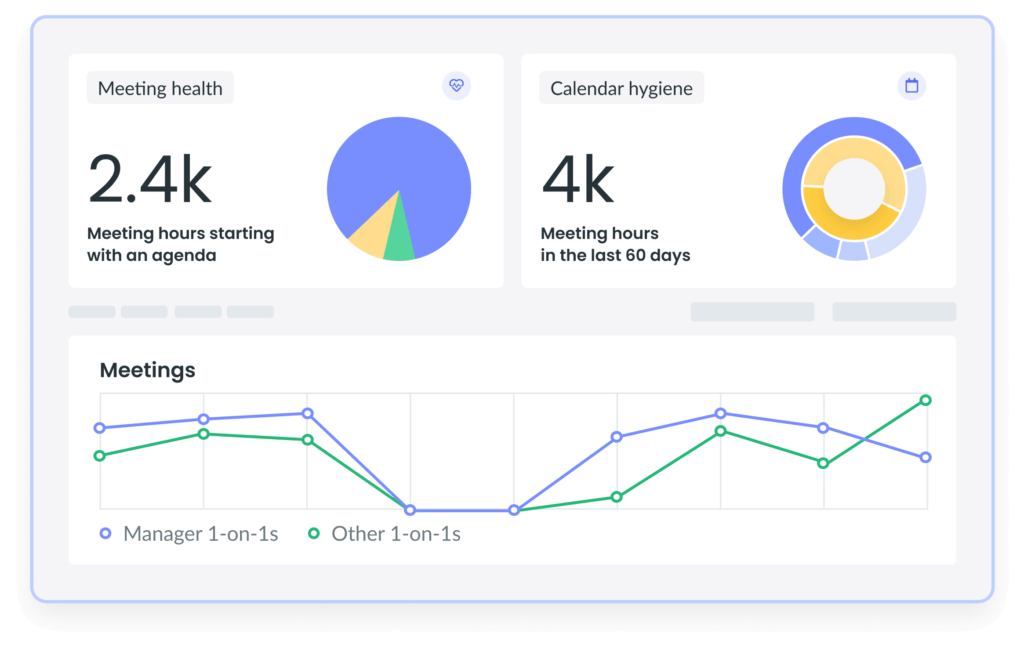
Host high-value meetings with Fellow
Fellow drives engagement and productivity before, during, and after every meeting by fostering accountability, encouraging continuous improvement, and enabling important conversations—all through one easy-to-use portal that can be integrated into your existing tool belt. Interested in learning more about how Fellow can help you and your team members collaborate on meeting agendas, record decisions, and keep each other accountable? Book a demo today to get more information on how you can use Fellow to combat low-value meetings.











